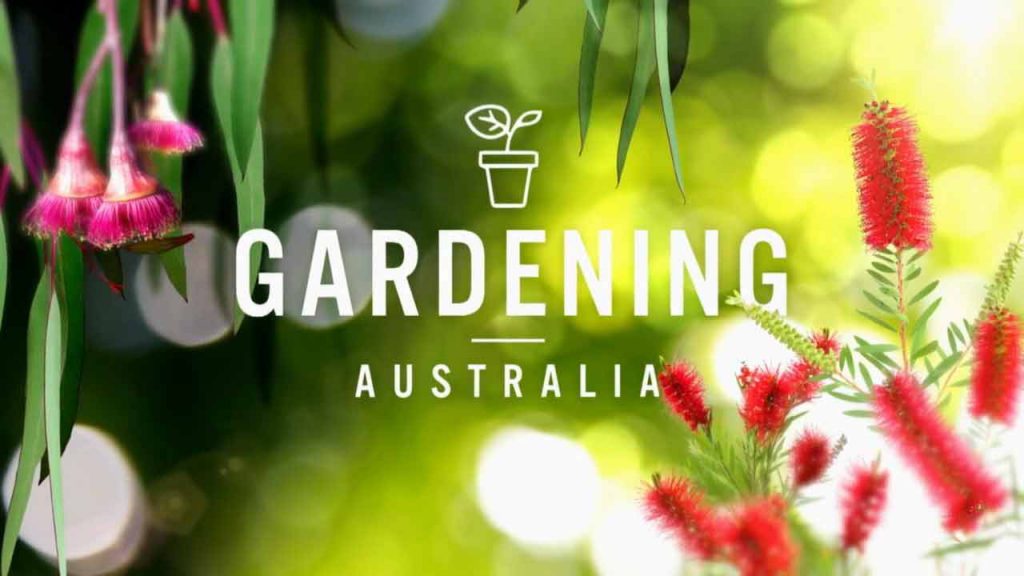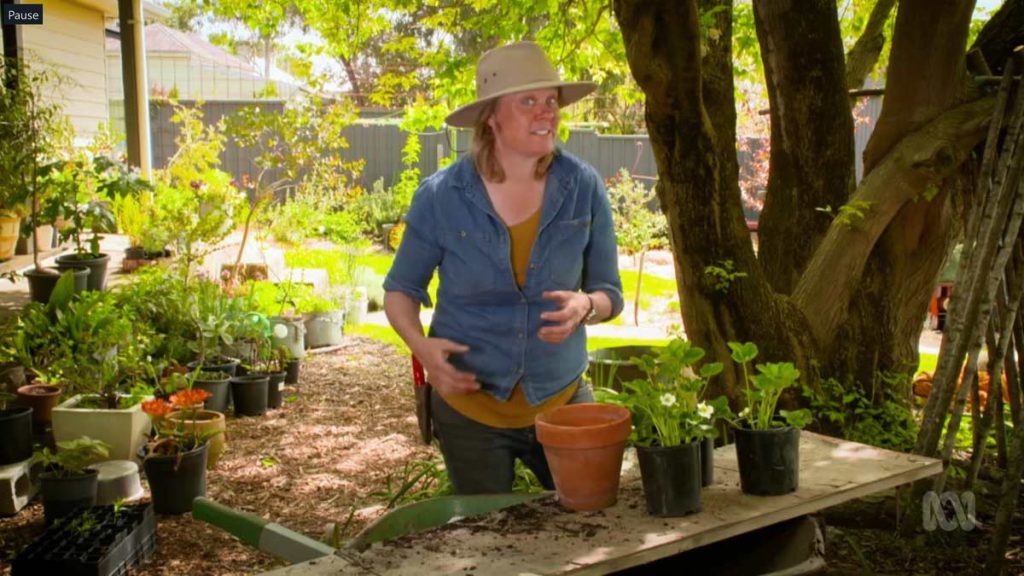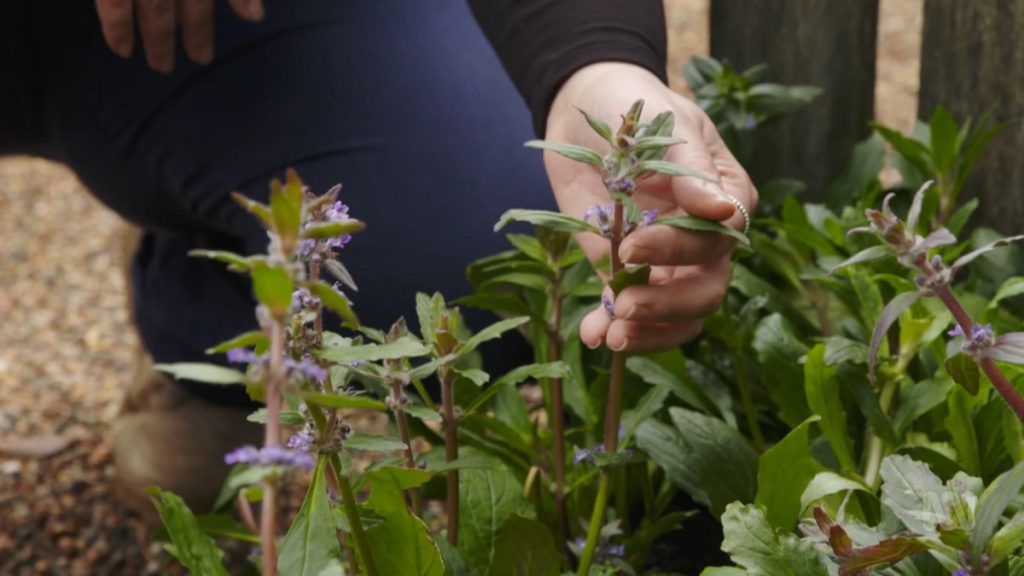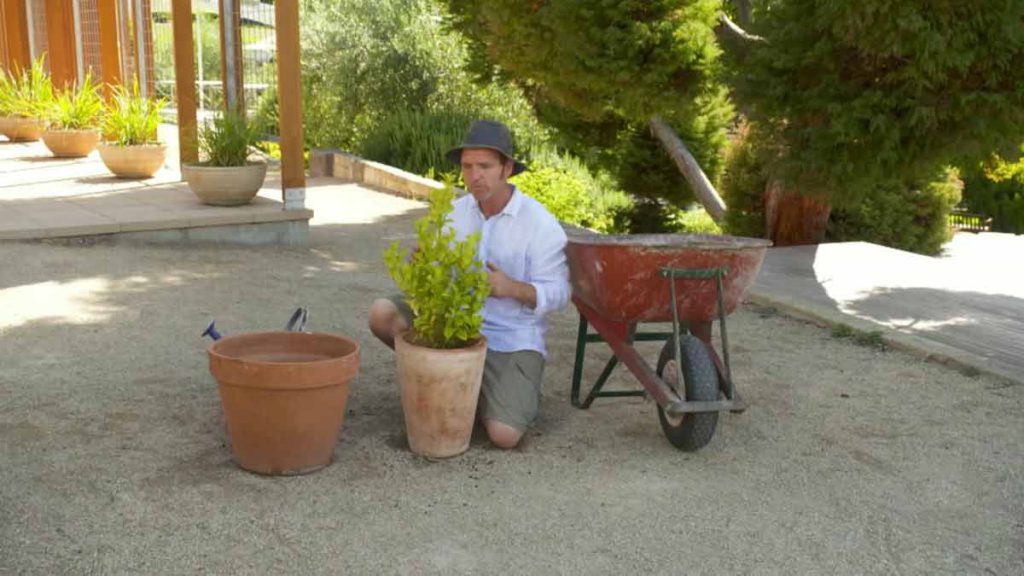Gardening Australia episode 22 2021: Costa Georgiadis finds cherry blossoms in Sydney, Millie Ross discovers the plants of the Victorian Goldfields, Jerry Coleby-Williams takes a deep dive into turmeric and ginger and Tino Carnevale grows spuds the easy way.
Inspiring, entertaining and full of practical advice, join Costa Georgiadis and the team as they unearth gardening ideas, meet avid gardeners and look at some of the most inspiring gardens from across the country.
Gardening Australia episode 22 2021
Hello Blossoms
Costa enjoys Japan’s famous cherry blossoms in one of Western Sydney’s hidden gardens.
The Japanese Garden is a major drawcard for visitors to the Auburn Botanic Gardens, about 20km west of Sydney. It’s easy to see why. Generally associated with Shinto shrines, the impressive red “Torrii” gate marks the entry to the Japanese garden, and, just as it does in Japan, signifies the transition into a revered space. Large ornamental lake, traditional tea house, bridges, man-made waterfalls and seats encourage visitors to sit contemplatively and reflect.
The design of this area draws inspiration from the famous Ryoan-ji Zen Buddhist Temple Garden in Kyoto, Japan, which can be seen through the “dry landscaping” elements of the garden. Raked “gravel”, small mountains, rock formations and the large stone steps across the lake area all draw inspiration from the kare-sansui (meaning traditional Japanese rock gardening). The result is peaceful, meditative, and evokes the essence of nature, rather than imitating it.
And while the non-living elements of this landscape are mesmerising, Paul Clark, Supervisor of Premium Parks for Cumberland Council, encourages visitors to experience the gardens at different times of the year. “The autumn colour here, particularly around the lake, is magic, but there is just so much blooming and showing off at any given time” he says.
FAQS – Planting bare-rooted plants | Weeding before mulching | Planting natives
Gardening Australia presenters answer commonly asked gardening questions.
Redfern Rooftop
Clarence explores an impressive rooftop garden designed especially for an inner-Sydney terrace house.
Redfern is a small, yet densely populated suburb of inner-Sydney with a diverse history of changing land use. In a narrow 3 story block right off the bustling Cleveland St hub, Landscape Architect Sacha Coles has transformed his own shady courtyard and concrete rooftop into a lush oasis to maximise his family’s access to nature, along with being a vital food forest for pollinators.
As soon as you walk in the front door, your view is directed to the tropical plants of the ground floor courtyard and the trunks of three tall Livistona australis. As you head upstairs, circular skylights capture each palm canopy, so you still feel like you’re under the trees. And even further up, the canopies pop out above a flat rooftop garden that has been covered in a variety of natives and cottage perennials to form a low, lush mass of varying leaf forms, colours, and flowers.
Easy Spuds
Tino shares a tip on growing spuds the easy way. Potatoes are a garden staple. Tino has a handy hack that takes the labour out of growing these tasty treats. All you need is a bin with the base cut out, some compost, straw and fertiliser.
Place your bin on the ground and use compost to stabilise. Tino’s bin will hold 1-2 potatoes, and he’s using the Tasman cultivar. He then adds a few more shovels of compost to cover the spuds. He then adds straw to cover them even more, and top dresses with a handful of pelletised chicken manure.
As the plants grow up, he’ll continue to add compost and straw to keep them covered. The spuds should be ready to harvest around new year, when Tino will remove the bin, harvest the spuds and reuse the organic matter.
More Than a Tree
Sophie helps with a rescue operation to move a pot-bound Wollemi pine to its forever home. Previously thought to be extinct since the age of the dinosaurs, the Wollemi Pine was discovered in 1994 growing in a rainforest gully in a remote park in NSW. With less than 100 trees in its wild home, the Wollemi is critically endangered.
To ensure that the Wollemi species continues to thrive, one strategy is to plant populations of Wollemi in gardens, such as these growing in the ground at the Mt Lofty. They are a beautiful tree with pendulous foliage and bubbling-looking bark, and they truly have captured the hearts of gardeners. You might have your own potted Wollemi at home on the back patio!
Growing Wollemi in pots can be a challenge for the uninitiated. Matt Coulter is the Horticultural Curator at Mt Lofty Botanic gardens, and has Wollemi Pines growing in pots in the Mt Lofty nursery. He uses a ‘rocket pot’ to ‘air prune’ the roots using holes on the side of the pot, preventing the tree from becoming root bound. “As the roots hit the air, they stop growing”. His plants (that he propagated from cuttings) are now 2 metres high. He suggests if you want to keep them in a pot for 10-20 years, then you need to pot them up every 2-3 years into larger and larger pots.
Laneway Looker
Jane stumbles on a surprising laneway garden in Melbourne and discovers how the right planting palette can bring serious impact in even the tiniest of spaces. Jane’s gone out for some milk, and stumbled across an impressive garden thriving in a deadend laneway, with beautiful plants bringing colour to the bluestone and bitumen. Pressed in against the colourbond fence and bluestone paving is a tiny border, about 10-20cm wide.
It’s got some hardy succulents that can survive the tough conditions such as Blue chalk sticks, blue fescue, pelargoniums and society garlic. It’s such a tiny unpromising space, but someone’s managed to fit in contrast in colour and form and so much visual interest.
The interesting plants don’t stop there, and Ryan’s continued his colour palette into his small front courtyard. Here Acacia aphylla form a front border, and Agave attenuate lend architectural interest to the house itself. The front verge has even been painted with the same theme, using Brachyscome and Dichondra.
Gold Fields – Gardening Australia episode 22 2021
Millie joins an ecologist to discover the vast variety of plants growing in the Victorian Goldfields. Millie catches up with ecologist Dr Cassia Read near Chewton, on part of the Castlemaine Diggings National Heritage Park, a valuable slice of the Box-Ironbark Forest that once stretched from central Victoria up to south-east Queensland. Superficially it looks like remnant bush, but 120-150 years ago, the area was completely cleared of trees. If you look closely, you can see the upturned earth from that era.
Box-Ironbark Forest is found on low-nutrient, low-rainfall sedimentary-rock slopes – exactly the same geology that made the area prime gold-mining country, so in the Victorian gold rush (1851-1870) it was extensively cleared and dug up, the trees used for infrastructure and firewood for the booming population. On the more fertile plains, the cleared land was used for farming, so regrowth patches of Box-Ironbark like this are quite rare.
“People look at what was destroyed in gold mining times and just see a degraded landscape, but it recovers well when it’s allowed to,” Cassia says.
Hardwood Cuttings
Tino shares some tips on hardwood cuttings. Tino takes hardwood cuttings from the plants that are asleep for the winter such as grapes, mulberries and currants. All you need is snipping tools and a sharp spade. Select a piece of the plant about 15-20cm long and a bit thicker than a pencil. Cut below a bud. Tino rubs the bottom buds off and removes any top growth. At this stage, you can add hormone or honey to the wound.
Add cuttings to pots and leave in a protected environment. If you have deep, well-drained soil and a protected aspect, you can even use your spade to put your cuttings straight into the ground.
In spring when the leaf buds open and the plant starts to grow, you’ll know your cutting has been successful!
Spice Up Your Life – Gardening Australia episode 22 2021
Jerry takes a closer look at tropical favourites turmeric and ginger and shows us how to propagate these kitchen favourites.
Two spices that Jerry relies on in his backyard cornucopia are turmeric and ginger. Prized equally for their strong aromatics in cooking as they are for their proven medicinal benefits, both ginger and turmeric are surprisingly easy to grow. Even more surprising the wide diversity of species and varieties available. All of these plants are in the plant family Zingiberaceae, hailing from SE asia and surrounds, and includes an entire rainbow of plants with fragrant, edible and spicy rainbow. What unites these plants is they’re perennials with edible vegetative rhizomes, and they will die down over the cooler months.
Pruning Banksias
Jane shows how to deadhead and prune Banksias. There are so many forms of banksia flowers and they’re all absolutely gorgeous, but at the end of their flowering season, you’re left with the old flowering spike and they really make the bush look a little bit untidy.
The best way to tidy them up is to get in and prune them back. Just use some sharp secateurs and prune off the cones or the spikes and you’ll find that the whole bush comes up really well. A haircut is always a good idea!
Broad Beans – Gardening Australia episode 22 2021
Tino shows how you can harvest more from your broad beans. If you planted your broad bean crop in late autumn or through the winter, you might be getting a little bit frustrated at the fact that you’ve got vigorous plants covered in flowers, but you don’t have any pods yet. That’s because it’s still a little bit too cold for the bees to come out and do their thing, but it doesn’t mean that there’s nothing to harvest!
Broad Bean flowers taste exactly like peas, and by thinning them out, what you’re actually doing is lightening the crop load, meaning the beans you do get will be bigger and of a far better quality. Also, the leaves of broad beans are succulent and tender and make a great addition to any salad.
So, there you go. There are still harvests to be had while you’re busy yourself with jobs to keep you one step ahead of spring!
My Garden Path – The Blyths
We meet a family of daffodil farmers who have grown the cheery spring flower for generations.




